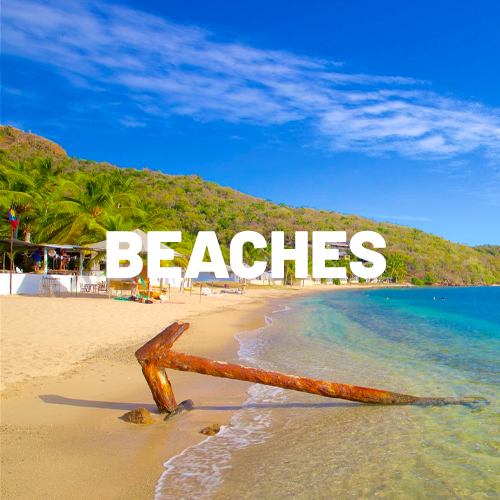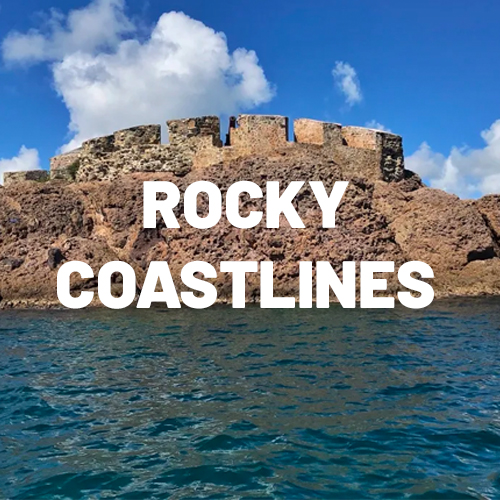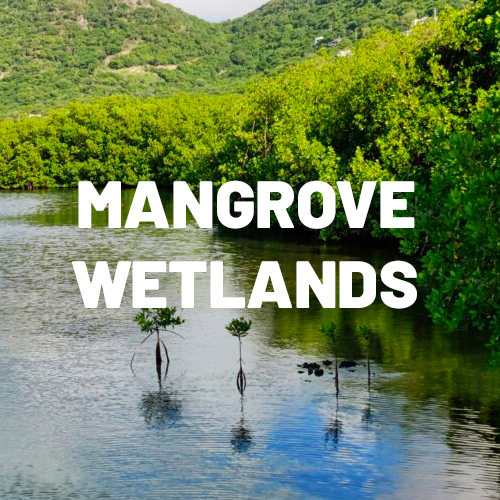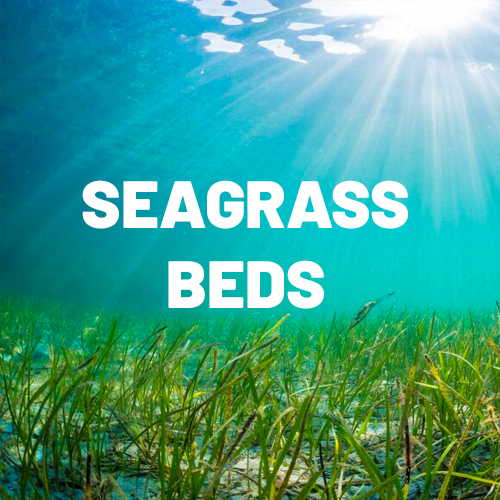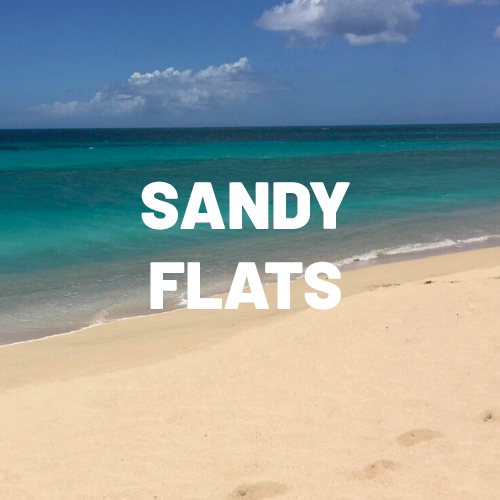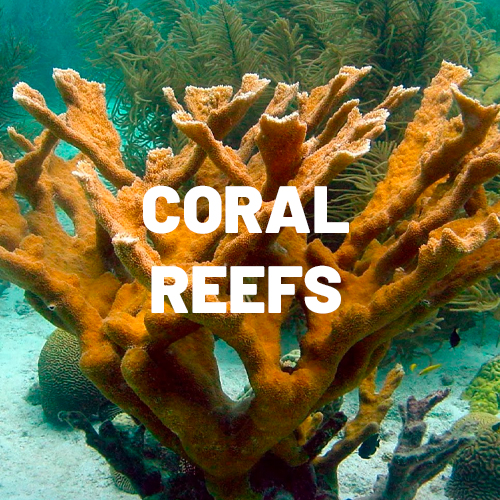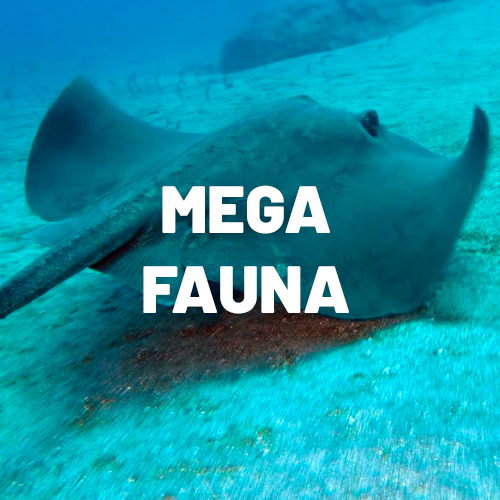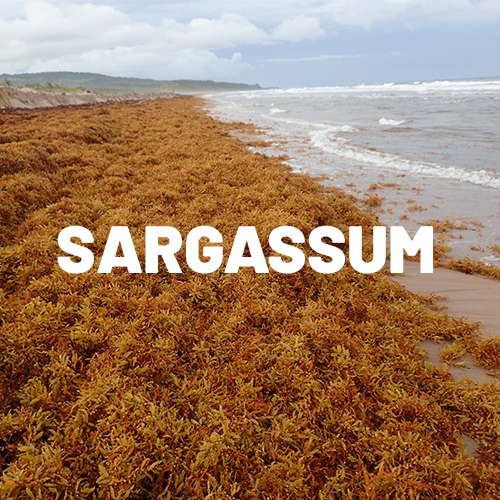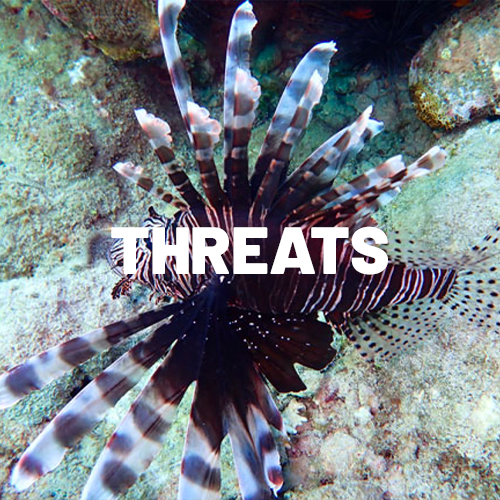Coral Reefs
Coral reefs are probably the most diverse marine ecosystem found within the waters of the Tropical Atlantic Ocean. Coral reefs are a unique organism, as they are actually a combination of a plant and an animal. A coral polyp is a translucent microscopic animal, resembling an upside-down jellyfish, which filter feeds and secretes calcium carbonate as it grows. The crystal-clear waters of the tropics are not very nutrient rich, so the coral polyp can only gather a portion of its food this way.
To fulfill its nutrient requirements, the coral polyp enters into a symbiotic relationship with a microscopic plant called a zooxanthella, which lives with the coral polyp and shares the food it makes during the process of photosynthesis. The hard structure one observes while snorkeling/scuba-diving is made by the calcium carbonate secreted by the coral polyps and the beautiful colours are a result of the zooxanthellae.
There are three major shapes which corals take:
- Branching corals: These corals include the Acropora and the Porites species. They are distinguished by, as the name suggest, their branching form. They tend to be among the faster growing species and provide structurally complex habitat for marine creatures to live in.
- Platy corals: Platy corals include some species of fire corals, as well as sheet and saucy corals. The habitat they produce is less complex than that of the branching corals, but are still of critical importance, particularly in the deeper waters.
- Boulder corals: These are among the slowest growers among the coral groups, but also the hardiest. Their shape makes them most resistant to wave actions and the impacts of tropical storm systems. Common boulder corals include brain, star and rose corals.
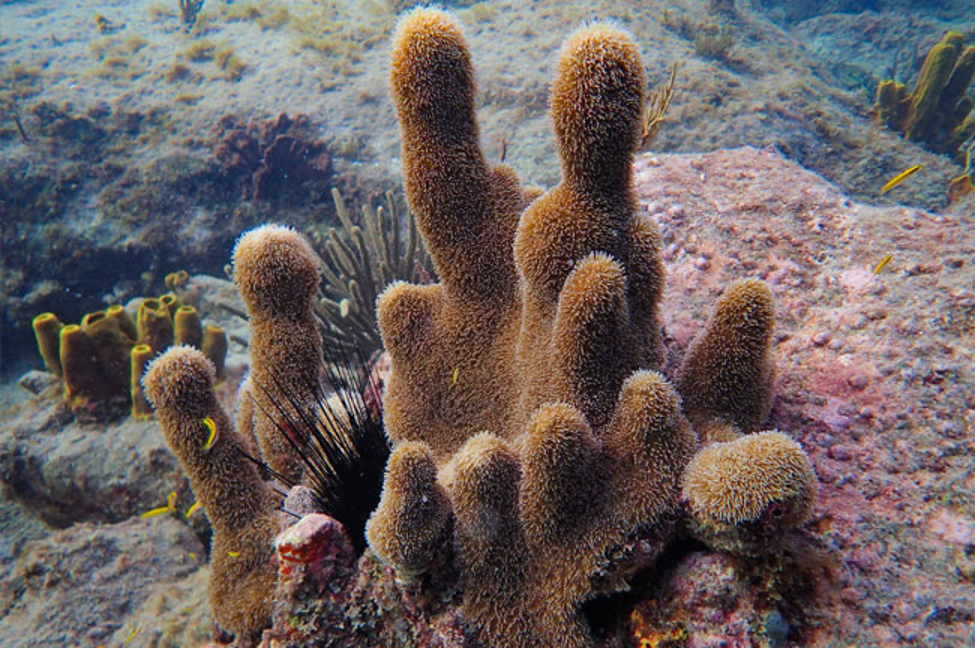
Pillar Coral (Dendrogyra cylindrus)
Photo by Ruleo Comacho
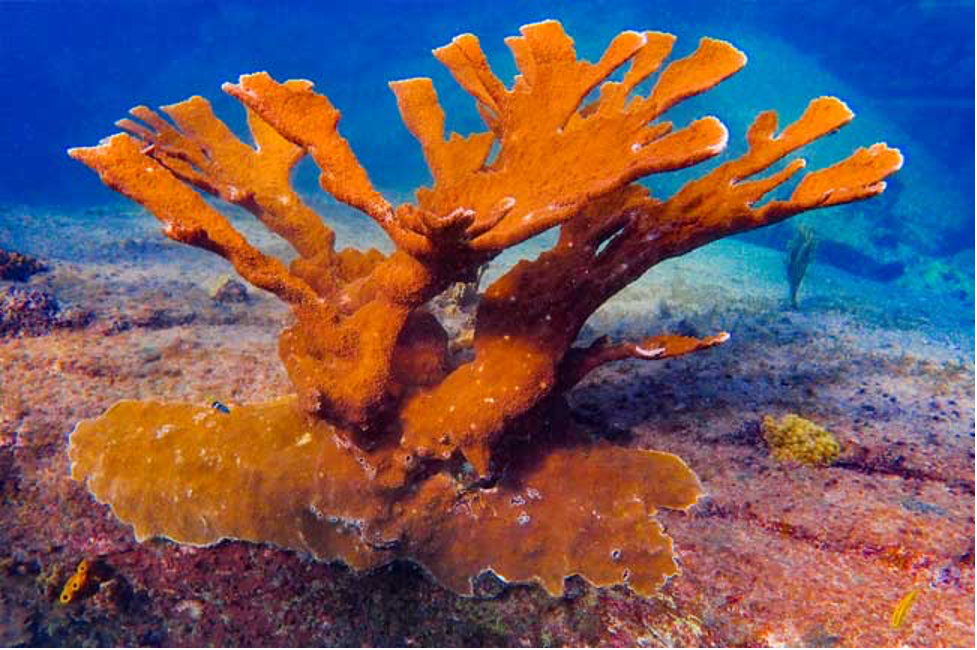
Elkhorn Coral (Acropora palmata)
Photo by Ruleo Comacho
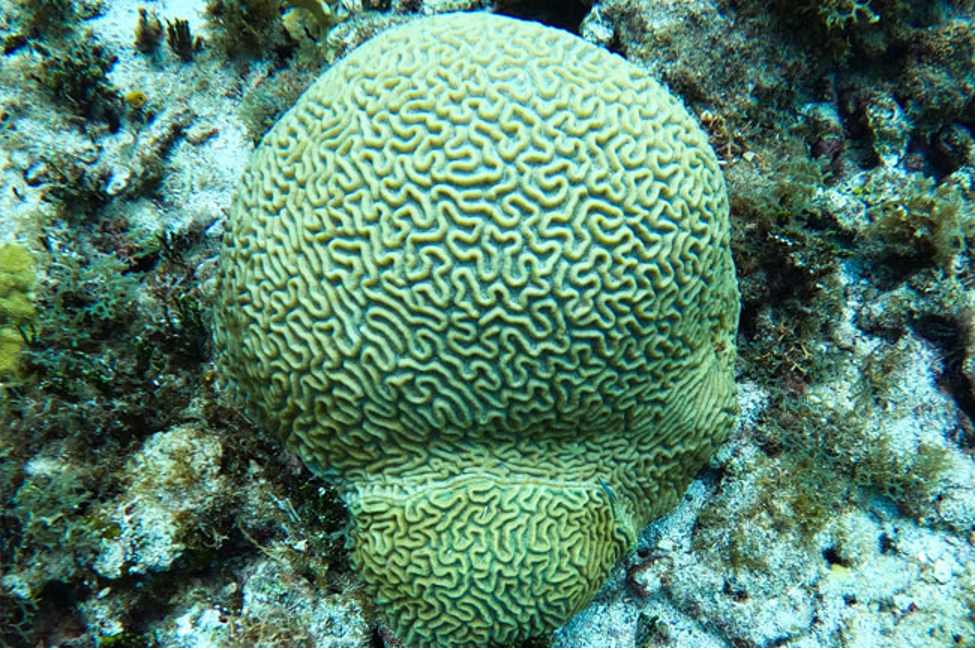
Symmetrical Brain Coral (Pseudodiploria strigosa)
Photo by Ruleo Comacho
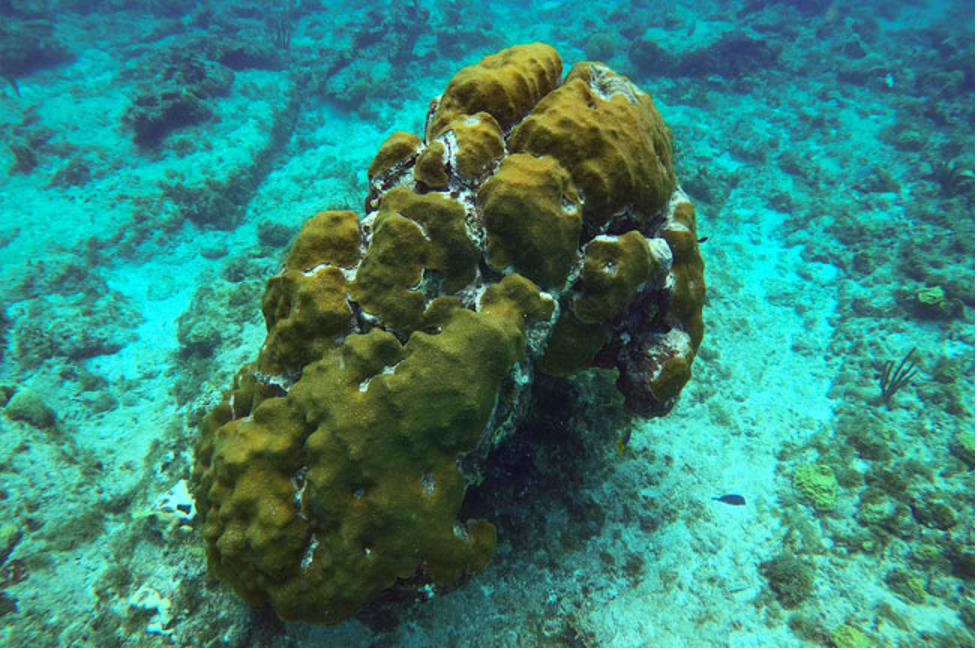
Mountainous Star Coral (Orbicella faveolata)
Photo by Ruleo Comacho
Also found on coral reefs are a variety of sea fans and sponges. Gorgonians are characterized by all having a central skeleton/axis. These organisms are plant-like in appearance, and common ones include: Sea Fans, Sea Rods and Sea Plum. Sponges are among the simplest of all multicellular animals and have no tissues or organs. They are found in a variety of colours and shapes and provide food and habitat for many organisms. Commonly seen types are Tube sponges (e.g. Barrel sponge) and Rope sponges.
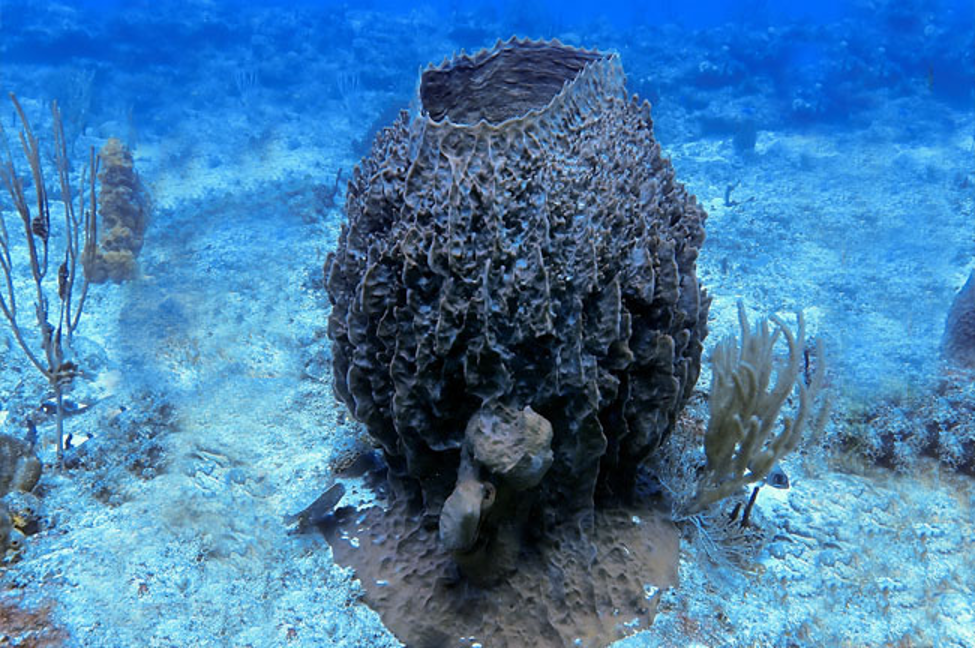
Giant Barrel Sponge (Xestospongia muta)
Photo by Ruleo Comacho
A variety of fauna can be found on coral feed ecosystems. These include:
Invertebrates
Organisms such as Caribbean Spiny Lobster, which are not only a commercially important product, but help to clean up waste organic matter from the coral reef system. Other invertebrate organisms include crabs, shrimp, worms, etc.
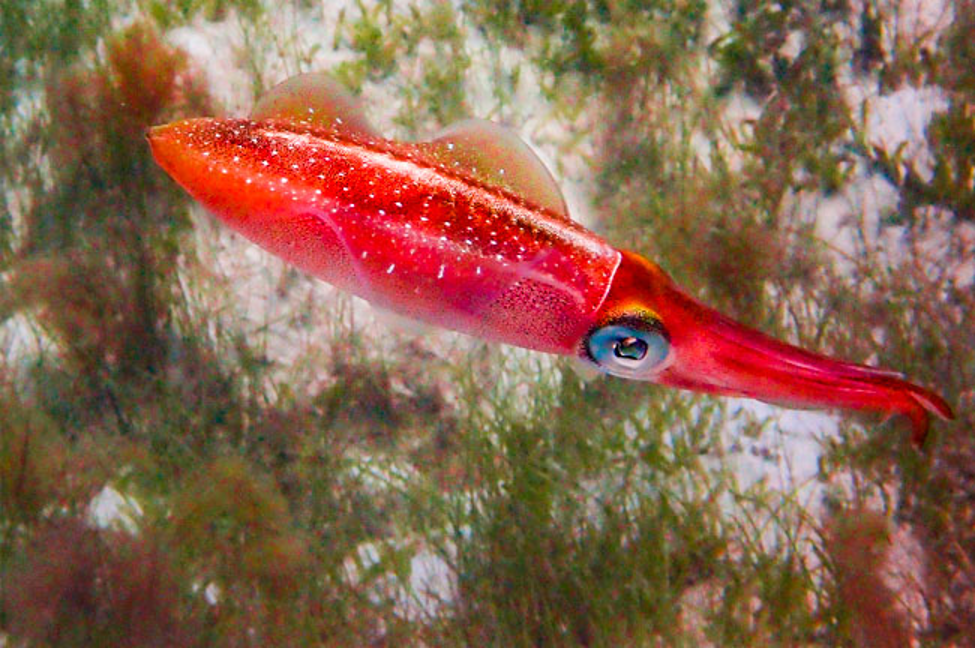
Caribbean Reef Squid (Sepioteuthis sepioidea)
Photo by Ruleo Comacho
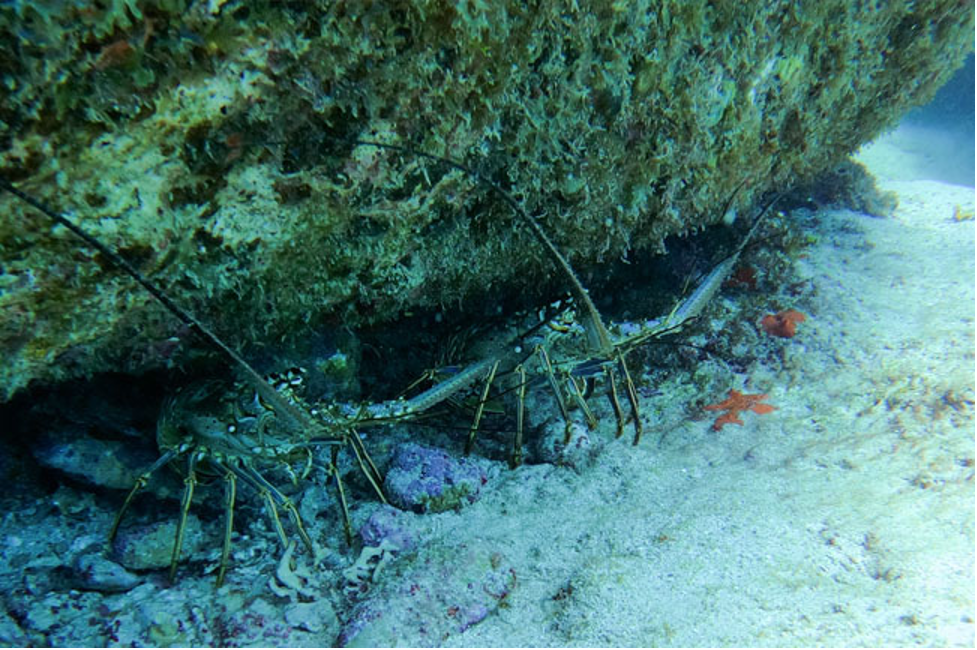
Caribbean Spiny Lobster (Panulirus argus)
Photo by Ruleo Comacho
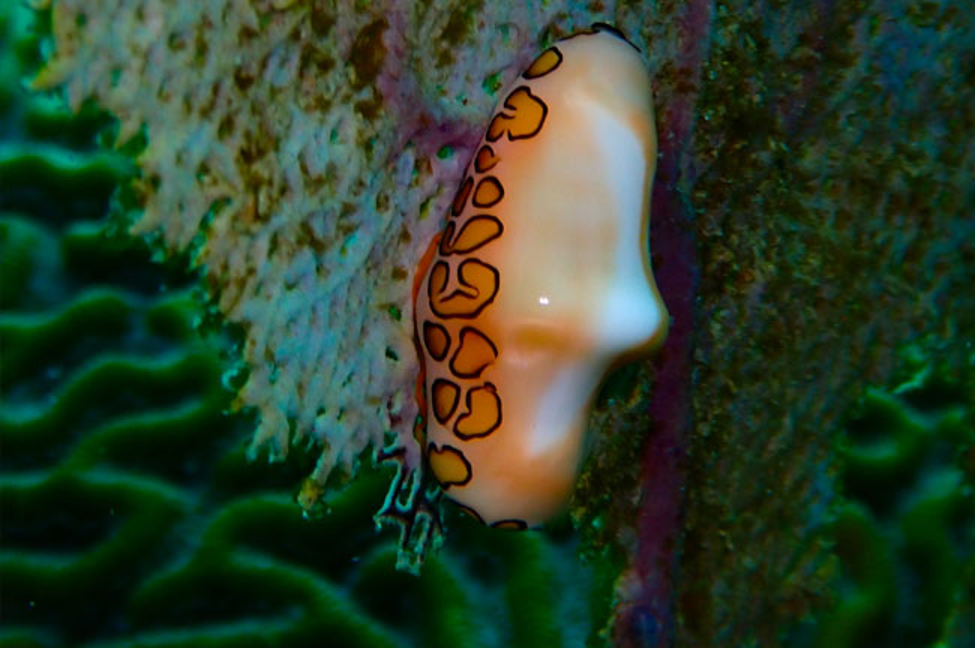
Flamingo Tongue Snail (Cyphoma gibbosum)
Photo by Ruleo Comacho
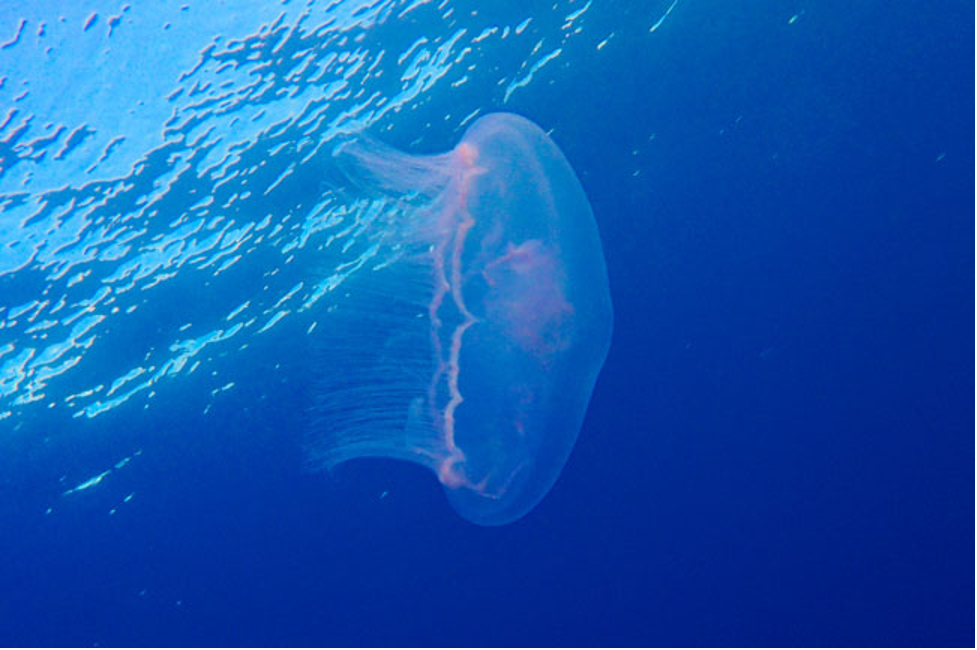
Moon Jellyfish (Aurelia aurita)
Photo by Ruleo Comacho
Eels
Eels are elongated fish which typically inhabit the shallow water of the ocean. A variety of moray eel species can be found on the coral reef ecosystems within the Nelson Dockyard National Park. They are opportunistic carnivores and feed primarily on smaller fish, crabs and crustaceans.
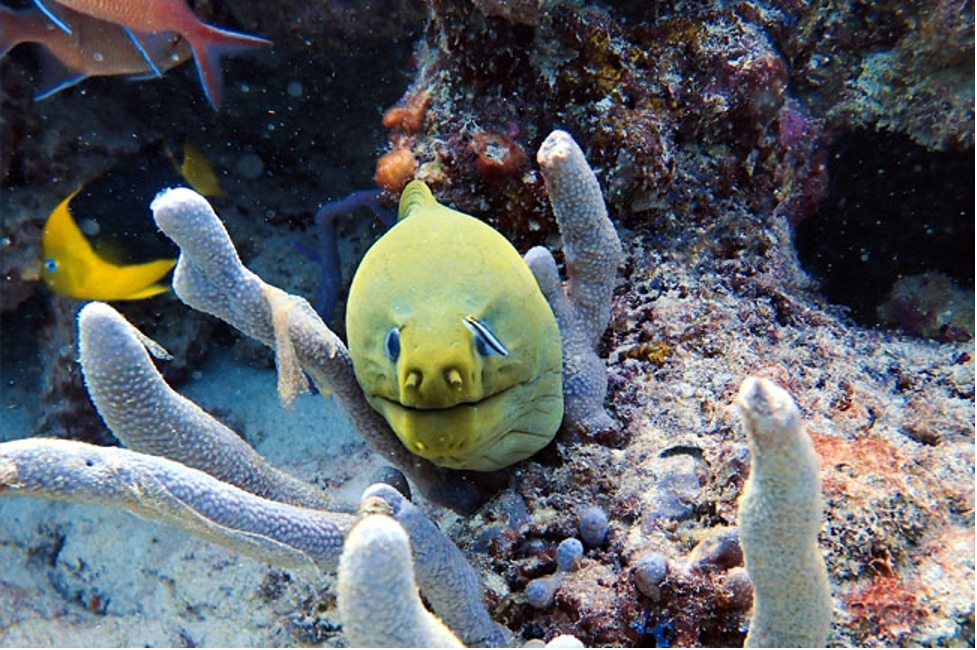
Green Moray Eel (Gymnothorax funebris)
Photo by Ruleo Comacho
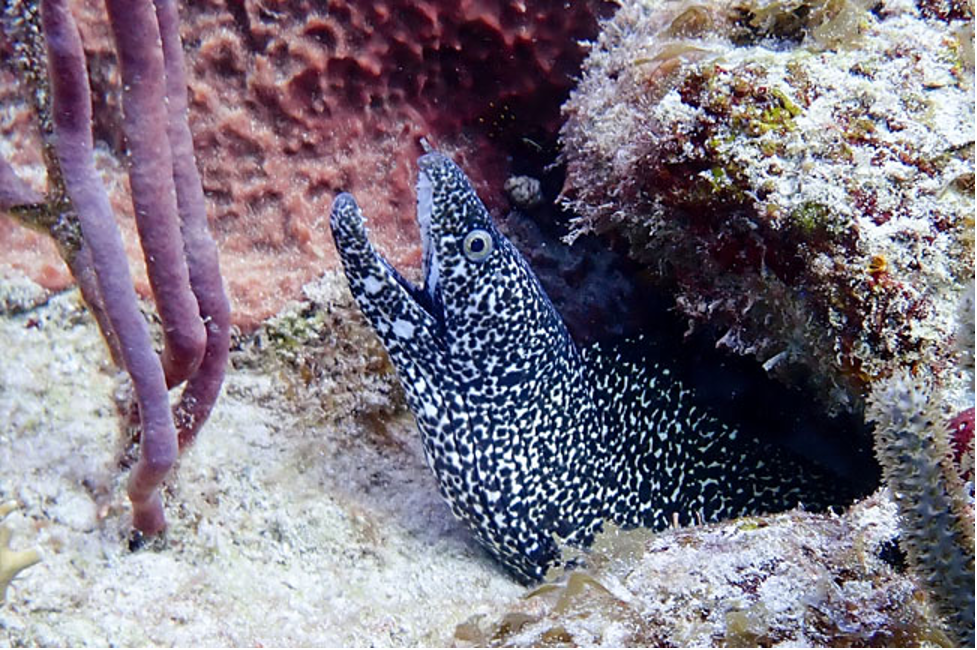
Spotted Moray Eel (Gymnothorax moringa)
Photo by Ruleo Comacho
Urchins
Urchins are a key herbivore found on the coral reef ecosystems. They feed primarily on plant material, inclusive of algae. The mouth is found at the bottom, while the spines are used to protect them from predators.
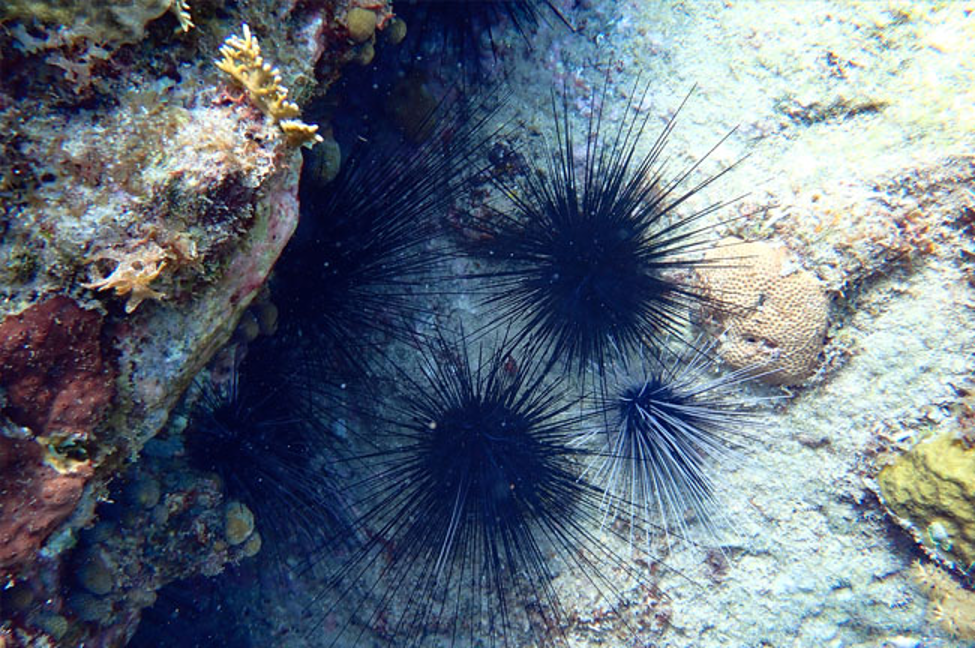
Long-Spined Sea Urchin (Diadema antillarum)
Photo by Ruleo Comacho
Fish
A major factor in the biodiversity of coral reefs is the diversity of fish species. While they are far too numerous to mention, here are a few key groups:
- Herbivorous fish: These are responsible for consuming the algae on the coral reef system which are a direct competitor to the growth of juvenile and adult corals.
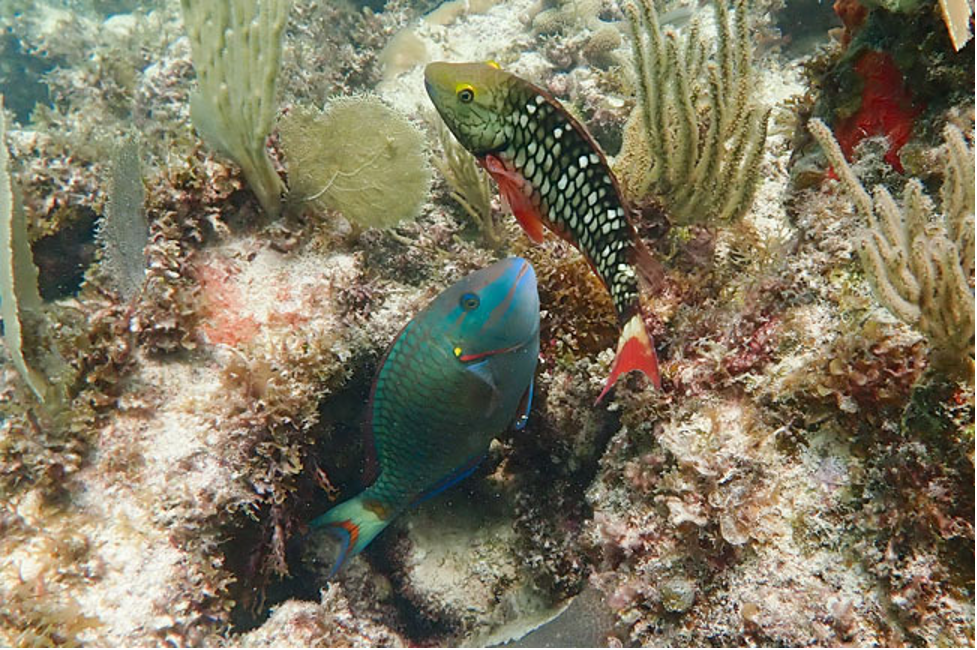
Stoplight Parrotfish (Sparisoma viride)
Photo by Ruleo Comacho
- Carnivorous fish: These include commercially important species, such as Snappers and Groupers, as well as other species inclusive of Pufferfish, Triggerfish and Barracuda
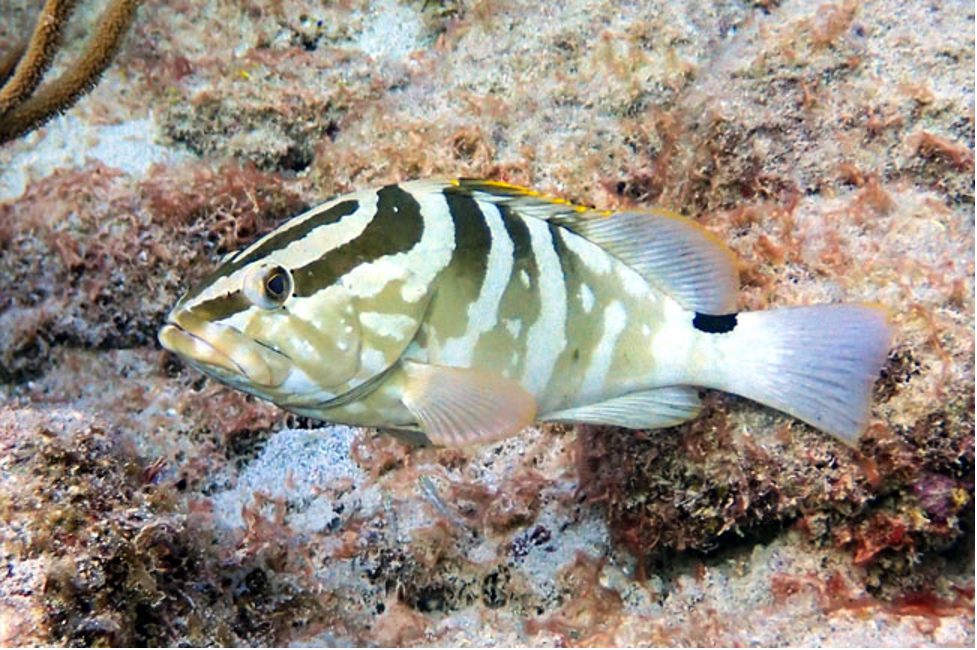
Nassau Grouper (Epinephelus striatus)
Photo by Ruleo Comacho
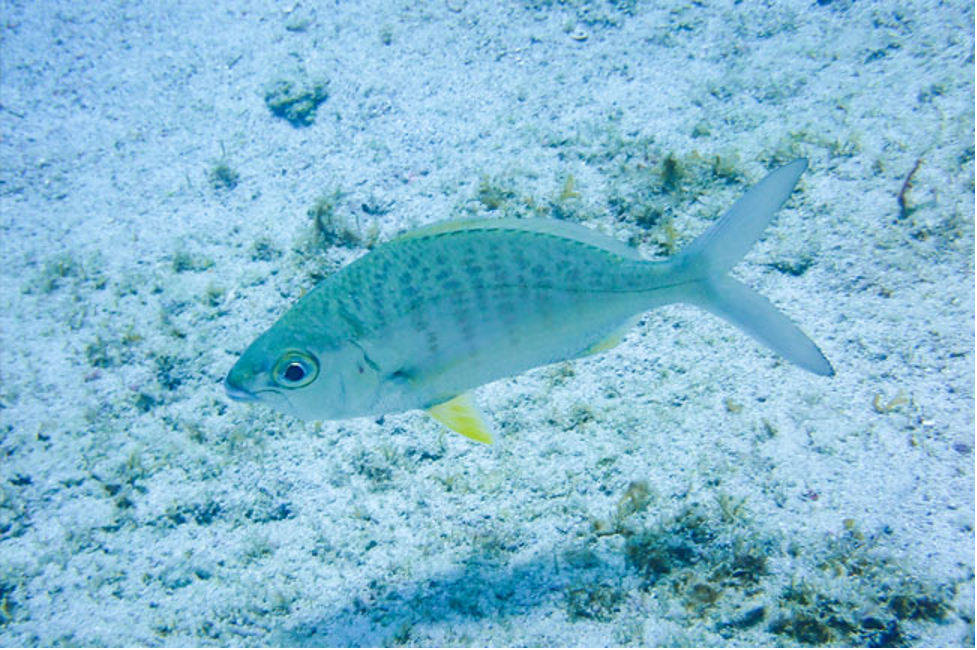
Yellowfin Mojarra (Gerres cinereus)
Photo by Ruleo Comacho
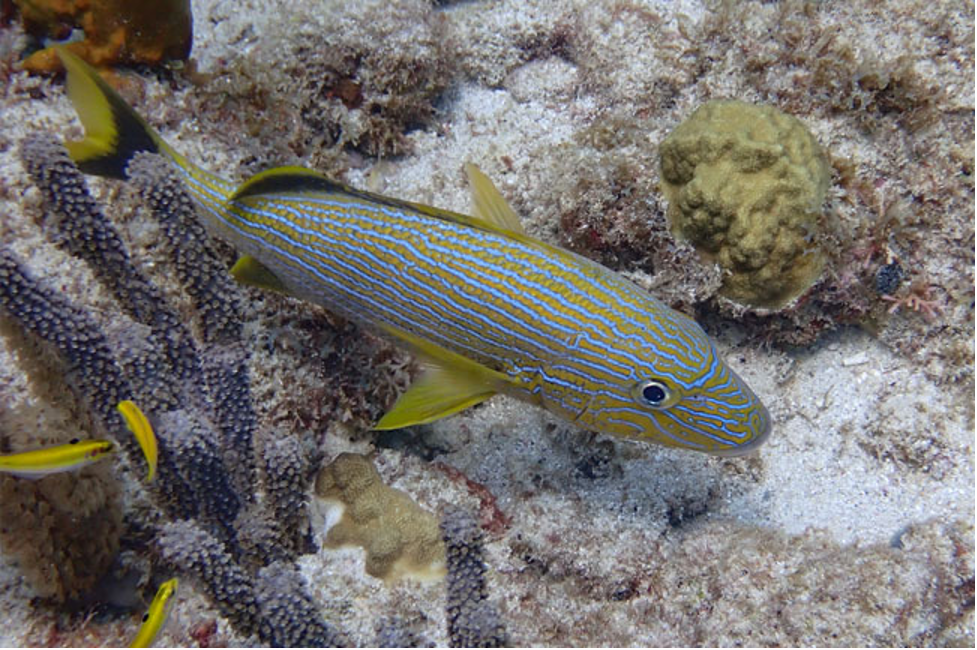
Bluestriped Grunt (Haemulon sciurus)
Photo by Ruleo Comacho
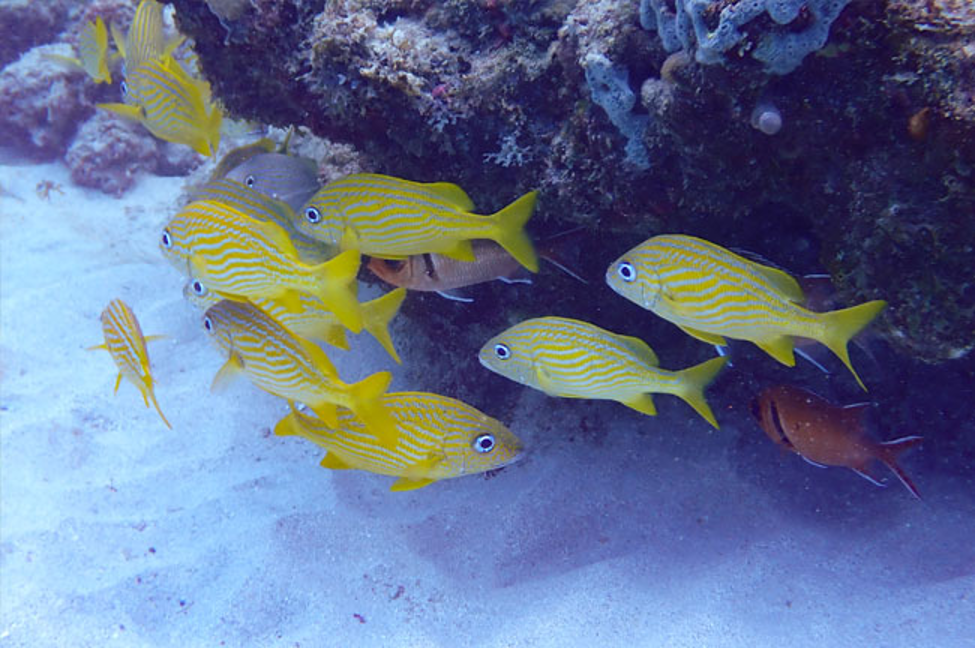
French Grunt (Haemulon flavolineatum)
Photo by Ruleo Comacho
ADDRESS
English Harbour, Antigua
OPENING HOURS
Monday – Friday
08:00 AM – 05:00 PM
Saturday
08:00 AM – 05:00 PM

